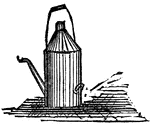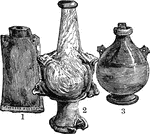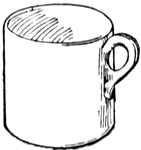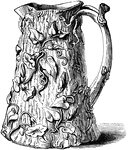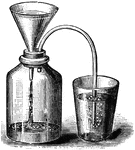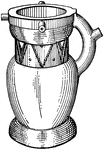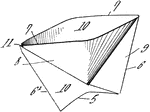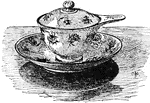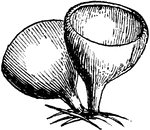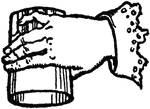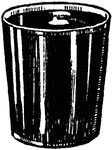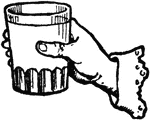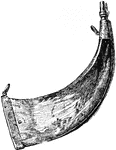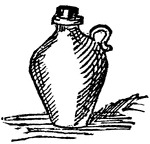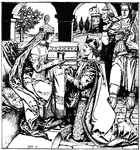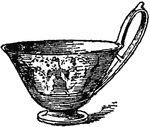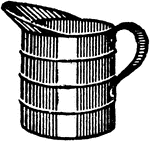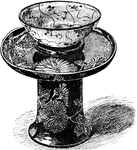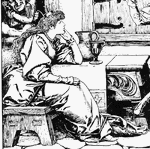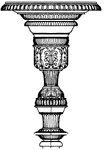
Antique Candelabrum Capital
The Antique candelabrum capital has a plate or cup like form on the top where a lamp or candle can be…
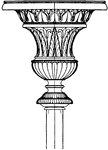
Antique Candelabrum Capital
The Antique candelabrum capital has a plate or cup like form on the top where a lamp or candle can be…
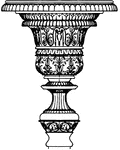
Antique Candelabrum Capital
The Antique candelabrum capital has a plate or cup like form on the top where a lamp or candle can be…

Antique Candelabrum Capital
The Antique candelabrum capital has a plate or cup like form on the top where a lamp or candle can be…
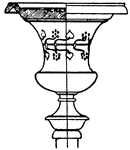
Antique Candelabrum Capital
The Antique candelabrum capital has a plate or cup like form on the top where a lamp or candle can be…

Antique Candelabrum Capital
The Antique candelabrum capital has a plate or cup like form on the top where a lamp or candle can be…
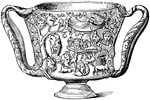
Carchesium
"The carchesium was a beaker, or drinking-cup, which was used by the Greeks in very early times. It…

Coffee Can
A coffee can is similar to a mug with a sturdily built type of cup often used for drinking hot beverages,…

Collecting Top
"Prior to the introduction of the cup and cone, a form of tunnel-head in which no valve or cone exists…
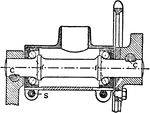
Crank-axle Bearing
"The usual form of crank-axle bearing which has inward-cups and is cup-adjusting. The end of the bracket…

Cup
An illustration of a cup designed by Euphronios, an ancient Greek vase painter and potter, active in…

Cup
Tangrams, invented by the Chinese, are used to develop geometric thinking and spatial sense. Seven figures…

Cup
Tangrams, invented by the Chinese, are used to develop geometric thinking and spatial sense. Seven figures…

Cup
Tangrams, invented by the Chinese, are used to develop geometric thinking and spatial sense. Seven figures…

Cup
Tangrams, invented by the Chinese, are used to develop geometric thinking and spatial sense. Seven figures…
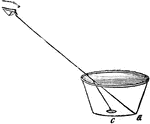
Cup and Shilling
"The refraction of water is beautifully proved by the following simple experiment. Place an empty cup,…
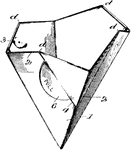
Collapsible Drinking Cup
This is a paperback collapsible drinking cup, used to store liquid while drinking inside contents.
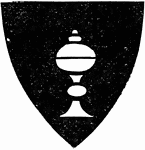
Covered Cup
"An egg-shaped, ornamental, covered cup, with a circular pedestal and base."—Aveling, 1891
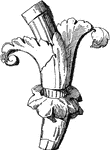
Roman Cup
The Roman Cup is an artificial foliage design that has serrated edges, made to look like natural desgins.

Tantalus's Cup
"Whenever liquid reaches the bottom of the short leg on the siphon inside the cup, the liquid is discharged…

Cup-adjusting Hub
"One end of the cup-adjusting hub, with inward bearings. The cones are formed of one piece with the…
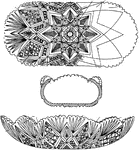
Unique Pattern Glass Dish
This is an ornamental container for drinking. A chalice is a goblet or footed cup intended to hold a…

Abnormal Fret Band
The abnormal fret band is a pattern found on a Japanese metal vessel (bowl or cup).

Diagram of a Leyden jar
"The most common and, for many purposes, the most convenient form of condenser is the Leyden jar. This…

External Margin Link Border
The external margin link border is found on the outside of a Greek kylix or wine-drinking cup. It is…
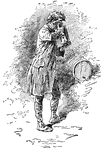
Man Drinking
An adult male drinking from a tankard with an oak barrel behind him. A tankard is a form of drinkware…

Man Drinking
An adult male drinking from a tankard with an oak barrel behind him and his rifle propped up against…
